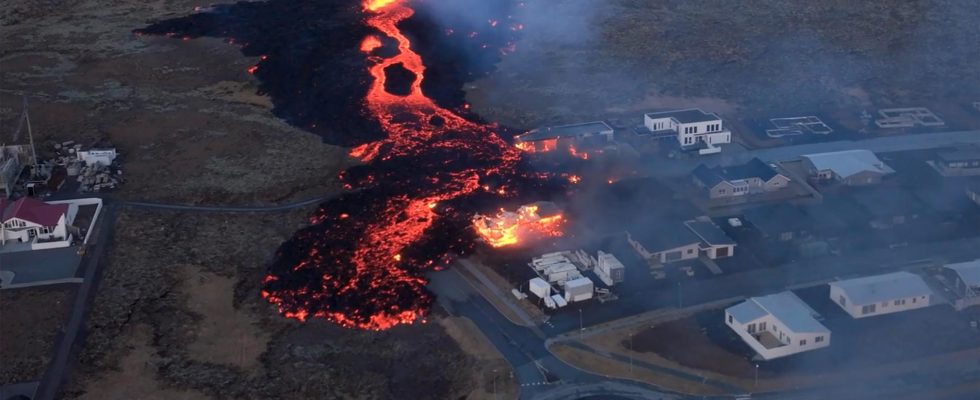unsaveSave
expand-left
full screen
chevron-rightnext
The volcanic eruption at Grindavík is likely just the first of many in the area for many years to come, experts predict
1 / 2Photo: Björn Steinbekk/AP/TT
The volcanic eruption in Grindavík is probably just the first of many more in the area for many years to come, experts predict.
For the Icelandic coastal city, the future looks dark, says Erik Sturkell, professor of geophysics at the University of Gothenburg.
– This is a death sentence for Grindavík, he says.
After Sunday’s volcanic eruption, residents have been thrown between hope and despair. The lava flow from the fissure, which then appeared only 50 meters from the city’s settlements, has indeed subsided, but experts warn that the situation is still very uncertain.
Grindavík was last evacuated in November after several earthquakes. In December there was also a smaller eruption, but the lava then never reached the city.
Sunday’s eruption, along with four eruptions that have occurred nearby in the last three years, also suggest that the Reykjanes peninsula is in a new volcanic eruption period – with significantly more eruptions to be expected for a long time to come.
That is according to Ólafur Gudmundsson, professor of geophysics at Uppsala University.
– The most recent period was between about 900 and 1230 and before that a similar period occurred about a thousand years earlier. So according to this time scale, it looks like this is the beginning of a new period of activity that could last for 200-300 years, he says.
– In other words, we cannot at all rule out new eruptions and the opening of more volcanic fissures that result in major damage.
“This won’t end”
Even Erik Sturkell, professor of geophysics and volcanologist at the University of Gothenburg, believes that the eruption at Grindavík is the beginning of a long period of eruptions.
– The documentation last time was not so good, but you know where the lava flows then went. And when it is now the first time in 800 years that an eruption has occurred on the Reykjanes Peninsula, everyone pretty much agrees that this is not the end of it, he says.
However, it is difficult to say exactly when the next eruption may occur, according to Sturkell.
– It can take a number of tens of years between eruptions, but that they will happen is certain, he says.
“Death for Grindavík”
Intensive work to strengthen the protective dikes around Grindavík has been going on since Sunday. In the past 24 hours, the area has been shaken by hundreds of small earthquakes – and the future of the city’s 3,800 inhabitants seems uncertain, to say the least, according to Ólafur Gudmundsson.
– Many cannot imagine coming back, and even though it is a small community, Grindavík is an important fishing port. It will be a political discussion, where risks and financial interests are hopefully considered. And it has only just begun, he says.
Erik Sturkell, for his part, sees the future of the Icelandic coastal city darkly.
– The previous outbreaks were tourist outbreaks, but now it is serious. This is a death sentence for Grindavík, he says.
FACT Volcanic Iceland
The boundary between the North American and Eurasian continental plates runs right through Iceland.
The location means that Iceland has an extremely high level of geological activity. For example, a volcanic eruption in the 18th century led to the death of a quarter of the population.
Most of the time, however, the eruptions are minor, and do not cause major consequences if they occur in sparsely populated, mountainous parts of the country. But modern society is sensitive in new ways – when Eyjafjallajökull on Iceland’s south coast spewed ash over Europe in the spring of 2010, air traffic was disrupted for up to several weeks.
Read more
